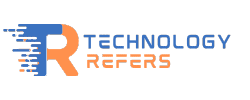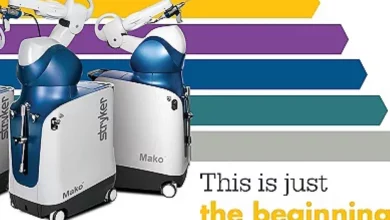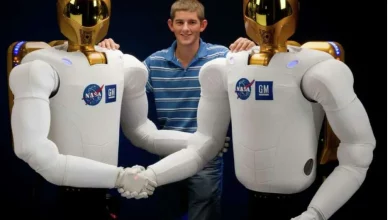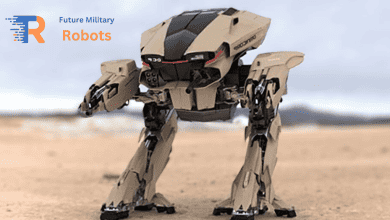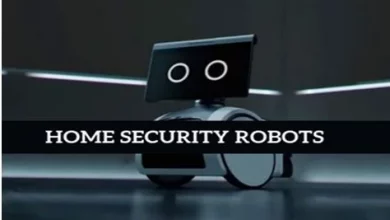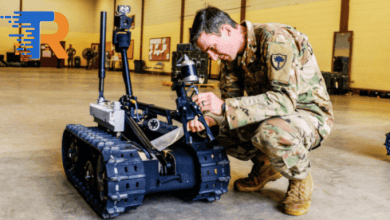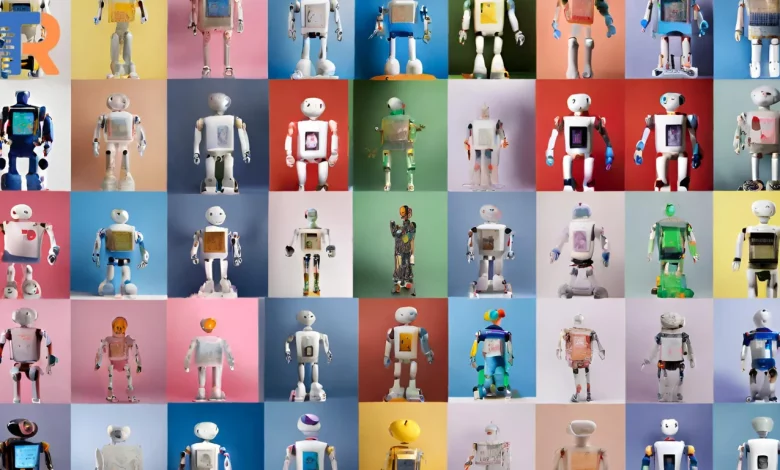
In today’s rapidly evolving technological landscape, the integration of artificial intelligence (AI) and robotics has become increasingly prevalent, giving rise to the concept of AI-Powered Robots. These cutting-edge machines are transforming various industries and playing a significant role in our daily lives. In this article, we will delve deep into the world of AI-Powered Robots, exploring how AI is used in robotics, dispelling myths about their danger, categorizing them into four distinct types, and highlighting their importance. Finally, we will outline the myriad benefits these intelligent machines bring to our society.
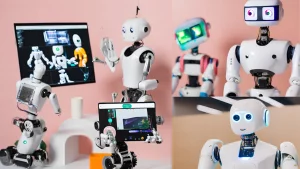
Understanding AI-Powered Robots
AI-Powered Robots, as the name suggests, are robots equipped with artificial intelligence capabilities. AI is a field of computer science that seeks to develop systems and machines capable of performing tasks that would typically require human intelligence, such as learning, reasoning, problem-solving, and decision-making. When AI is integrated into robots, they can autonomously perform a wide range of complex tasks with a high level of efficiency, accuracy, and adaptability.
How AI is used in Robotics
The integration of AI into robots involves the incorporation of algorithms and computational models that enable these machines to perceive and understand their environment, make decisions, and execute tasks. Here are some key ways in which AI is used in robotics:
-
Sensing and Perception:
AI-Powered Robots are equipped with various sensors, such as cameras, lidar, and ultrasonic sensors, that allow them to perceive and understand their surroundings. AI algorithms process the data from these sensors to create detailed maps, identify objects, and detect obstacles, enabling the robot to navigate and interact with its environment effectively.
-
Machine Learning:
One of the core components of AI in robotics is machine learning, which enables robots to learn from their experiences and improve their performance over time. Through machine learning algorithms, AI-Powered Robots can recognize patterns, adapt to changing conditions, and make informed decisions based on their past interactions.
-
Natural Language Processing (NLP):
NLP is a subset of AI that focuses on enabling machines to understand and communicate in human language. Some AI-Powered Robots are equipped with NLP capabilities, allowing them to engage in conversations with humans, understand voice commands, and provide information or assistance in a natural and intuitive way.
-
Autonomous Navigation:
AI-Powered Robots can autonomously plan and execute their movements within an environment. Using AI-driven navigation algorithms, these robots can avoid obstacles, plan efficient paths, and reach their destinations while adapting to real-time changes in their surroundings.
-
Object Manipulation:
Robotic arms and manipulators equipped with AI can handle objects with precision and dexterity. AI algorithms analyze visual and tactile feedback, allowing the robot to grasp, lift, and manipulate objects with the same finesse as a human hand.
-
Predictive Maintenance:
In industrial settings, AI-Powered Robots are used to monitor equipment and perform predictive maintenance. These robots can analyze data from various sensors to predict when machines or components are likely to fail, allowing for proactive maintenance and reducing downtime.
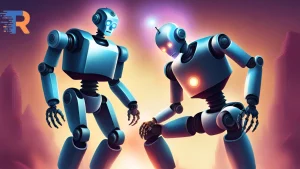
Are AI-Powered Robots Dangerous?
One common misconception surrounding AI-Powered Robots is the notion that they pose a significant danger to humans. However, this concern is largely rooted in misinformation and sensationalism. AI-Powered Robots are designed and programmed with safety in mind, and their behavior is rigorously controlled by strict guidelines and regulations.
- Safety Measures:
AI-Powered Robots are equipped with multiple safety features to ensure the well-being of humans in their proximity. These features can include sensors that detect obstacles and human presence, emergency stop buttons, and compliance with safety standards and regulations.
- Strict Programming:
Robotic systems, especially those used in sensitive environments like healthcare and manufacturing, are programmed with strict constraints to prevent any actions that could harm humans. These constraints limit the robot’s speed, force, and range of motion, ensuring they operate safely in close proximity to people.
- Regulations:
Many countries have established regulations and standards for the safe operation of AI-Powered Robots. These regulations outline the requirements for robot manufacturers and users, addressing issues such as safety testing, liability, and insurance.
4 Types of AI-Powered Robots
AI-Powered Robots come in various types, each designed to serve specific functions and industries. Let’s explore four distinct categories:
- Industrial Robots:
Industrial AI-Powered Robots are designed for use in manufacturing and assembly lines. They are often equipped with robotic arms and manipulators that can perform tasks such as welding, painting, assembling components, and handling materials. These robots are known for their precision, speed, and efficiency, making them invaluable in the manufacturing sector.
- Service Robots:
Service AI-Powered Robots are created to assist humans in a variety of settings, including healthcare, retail, and hospitality. Examples of service robots include robotic surgeons, automated checkout machines, and hotel concierge robots. These robots are designed to enhance customer service, increase efficiency, and provide support in areas where human labor may be limited or costly.
- Autonomous Vehicles:
Autonomous vehicles, including self-driving cars and drones, are a prominent example of AI-Powered Robots. They utilize AI for navigation, object detection, and decision-making, enabling them to operate without human intervention. Autonomous vehicles have the potential to revolutionize transportation and logistics, offering safer, more efficient, and environmentally friendly modes of travel and delivery.
- Humanoid Robots:
Humanoid AI-Powered Robots are designed to resemble and mimic human movements and actions. They are often used in research, entertainment, and educational applications. Humanoid robots can engage in human-like interactions and perform tasks such as walking, dancing, and communicating, making them ideal for applications where human engagement is essential.
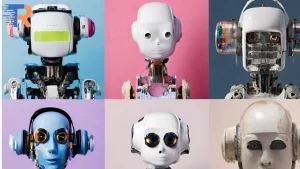
Why AI-Powered Robots are Important
The integration of AI into robotics is not merely a technological novelty; it holds immense importance in our society and is transforming various aspects of our lives. Here are some compelling reasons why AI-Powered Robots are important:
- Increased Efficiency:
AI-Powered Robots can perform repetitive and labor-intensive tasks with high efficiency and accuracy, reducing the need for human involvement in mundane and time-consuming activities. This frees up human workers to focus on more complex and creative tasks.
- Enhanced Productivity:
In industries such as manufacturing and logistics, AI-Powered Robots streamline operations, resulting in increased productivity and reduced production costs. They can work around the clock without fatigue or breaks, contributing to consistent output.
- Precision and Consistency:
Robots equipped with AI are known for their precision and consistency in performing tasks. They can achieve exact measurements, movements, and placements, which is critical in applications such as surgery, quality control, and material handling.
- Safety and Risk Mitigation:
AI-Powered Robots are employed in environments that may be hazardous for humans, such as deep-sea exploration, nuclear power plants, and disaster response. By utilizing robots, we can minimize the risk to human lives while carrying out essential tasks.
- Accessibility and Inclusivity:
Service robots, particularly those designed for healthcare, can provide assistance to individuals with disabilities, the elderly, and those who require medical care. These robots promote accessibility and inclusivity by offering support and companionship.
- Exploration and Research:
AI-Powered Robots are instrumental in scientific research and exploration, whether it be in space, underwater, or in extreme environments. They can collect data, perform experiments, and provide insights that would be otherwise impossible for humans to obtain.
Continuous Benefits of AI-Powered Robots
The ongoing evolution of AI-Powered Robots continues to unfold, offering an array of benefits that touch on various aspects of our lives and industries. As technology advances and the synergy between artificial intelligence and robotics deepens, the advantages of AI-Powered Robots become even more apparent. In this section, we will explore the continuous benefits and positive impacts these intelligent machines bring to our world.
- Enhanced Precision and Consistency:
AI-Powered Robots are celebrated for their unwavering precision and consistency, which is crucial in fields where human error can have significant consequences. In manufacturing and quality control, for example, these robots can perform tasks with microscopic precision, ensuring that every product meets exact specifications. This translates into improved product quality and fewer defects, ultimately benefiting both businesses and consumers.
- Improved Safety:
Safety is a top priority in various industries, and AI-Powered Robots are making significant contributions in this regard. In settings where human workers are exposed to hazardous conditions, such as chemical plants or nuclear facilities, robots can be deployed to handle dangerous tasks. Their use not only minimizes the risk of accidents and injuries but also ensures that these tasks are performed with meticulous care.
- Efficiency and Productivity Gains:
AI-Powered Robots are synonymous with efficiency and productivity. They can tirelessly work round the clock without needing rest, leading to increased output and reduced production costs. In logistics and warehousing, robots equipped with AI streamline operations, leading to faster order fulfillment and cost savings. These efficiency gains translate into better profitability for businesses and more affordable products for consumers.
- Accessibility and Inclusivity:
Service robots, particularly those designed for healthcare and assistance, are creating a more inclusive and accessible world. They provide vital support to individuals with disabilities, the elderly, and those who require medical care or assistance in their daily lives. The presence of service robots enhances the quality of life for those who may face challenges due to age or physical limitations, fostering a more inclusive society.
- Enabling Scientific Discovery:
AI-Powered Robots are indispensable tools in scientific research and exploration. They are capable of venturing into environments that are too hazardous, remote, or extreme for humans to access safely. These robots can collect data, conduct experiments, and provide invaluable insights into fields such as space exploration, deep-sea research, and environmental monitoring. Their contribution to scientific discovery continues to expand our knowledge and understanding of the world around us.
- Customization and Personalization:
AI-Powered Robots are becoming increasingly sophisticated in understanding human preferences and needs. This is evident in the use of AI-driven recommendation systems and virtual assistants. These robots can analyze user data to tailor experiences, products, and services to individual preferences. As a result, consumers enjoy a more personalized and relevant interaction with the products and services they use.
- Environmental Sustainability:
The positive impact of AI-Powered Robots on the environment is a growing concern. They play a pivotal role in making various industries more environmentally sustainable. In agriculture, for example, autonomous robots can precisely apply fertilizers and pesticides, reducing the overuse of chemicals and minimizing environmental harm. In transportation, autonomous vehicles powered by AI can contribute to reduced traffic congestion and lower emissions, leading to a greener future.
- Cost Savings and Economic Growth:
By automating repetitive and labor-intensive tasks, AI-Powered Robots help businesses reduce labor costs while increasing productivity. These cost savings can lead to higher profitability and economic growth. Additionally, the robotics industry itself is a source of economic development, creating jobs in research, development, manufacturing, and maintenance of robots.
- Real-time Adaptability:
AI-driven robots possess the unique ability to adapt to real-time changes in their environment. They can adjust their actions and decisions based on the data they gather, ensuring efficient and effective responses to evolving situations. This adaptability is especially valuable in applications such as autonomous vehicles, where quick decisions are essential for safety.
- Progress in Education and Research:
AI-Powered Robots have found their place in educational settings, where they assist in teaching and research. They provide students with hands-on experience in robotics and programming, helping develop valuable skills for the future. In research, robots serve as experimental platforms for testing new AI algorithms and exploring innovative solutions to complex problems.
Conclusion
The continuous benefits of AI-Powered Robots underscore their growing importance in our world. These intelligent machines have the potential to enhance precision, improve safety, drive efficiency, promote inclusivity, enable scientific discovery, support environmental sustainability, and contribute to economic growth. As the technology behind AI-Powered Robots advances, we can expect even more transformative and positive impacts on our society and industries. Embracing this technology and harnessing its potential will undoubtedly shape the future in remarkable and beneficial ways.
